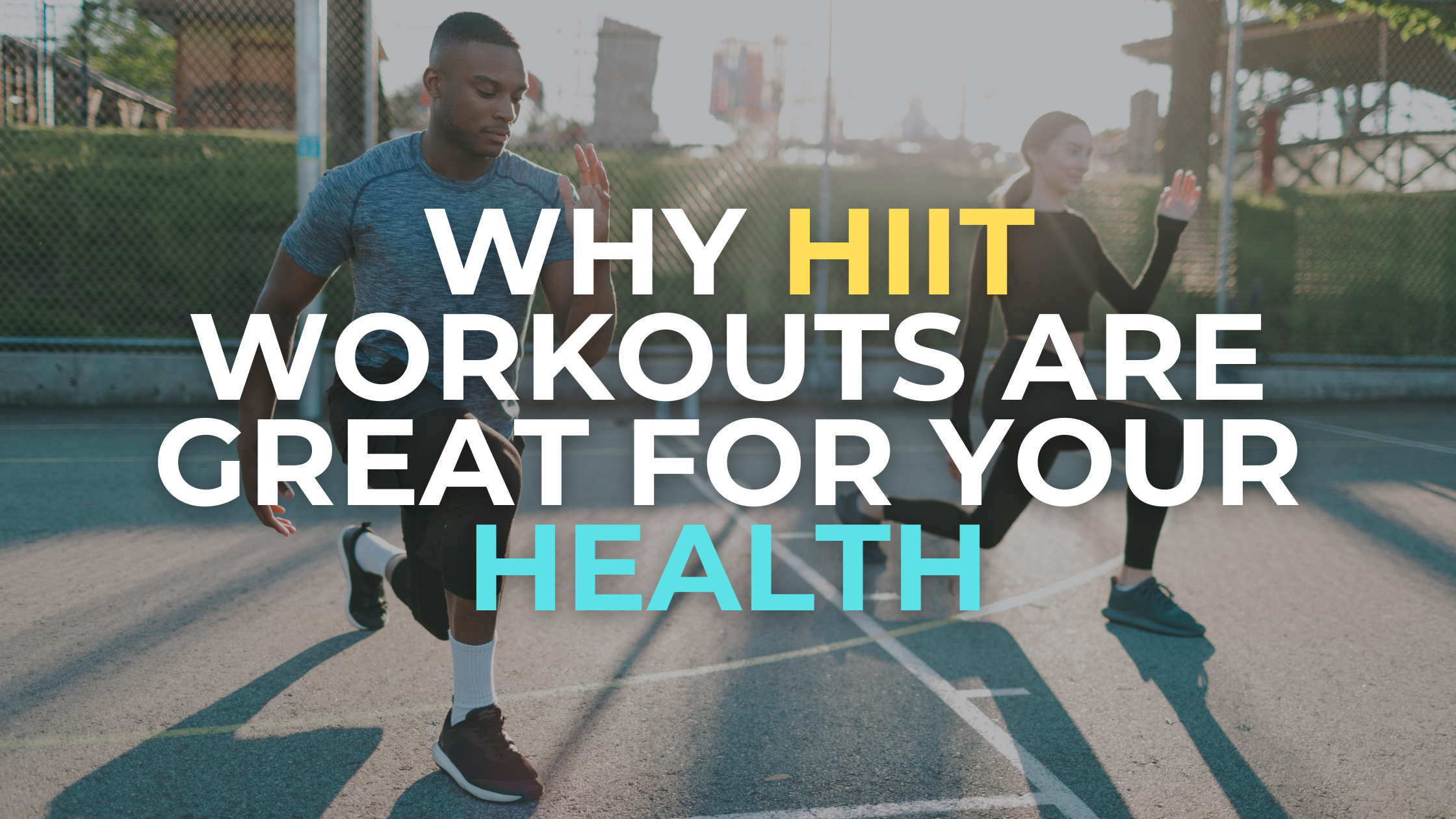How to add HIIT workouts to your regular exercise routine.
High Intensity Interval Training is a bit of a health-godsend. It improves more health outcomes than we can count on one hand, so how do you add it to your workout routine?

High Intensity Interval Training (HIIT) has been all over the news, media headlines, social media, and academia for the past decade. But what actually are the benefits of HIIT for fitness, strength, aerobic capacity, and lifestyle? And how do you build it into your routine?
What is High Intensity Interval Training?
High Intensity Interval Training (HIIT) consists of alternating periods of exercise at high, maximum or supra-maximum intensity with periods of low intensity [1]. These means that in, for example, a 30 minute HIIT workout would include periods of exercise that is hard work followed by a period of rest (i.e., 1 minute of squats 1 minute of push ups and 1 minute of star jumps, followed by 2 minutes of rest). There are many variables to consider regarding HIIT workouts including exercise period (AKA working interval) intensity and duration, rest period intensity and duration, number of sets, number of repetitions, and exercise choice (e.g., free weights, body weight, sprints etc) [2].
High Intensity Interval Training has become a popular method for exercise as evidence suggests that you can get the same benefits as exercising at a moderate intensity but dedicate less time. Realistically, this might mean you can get very similar physiological benefits of 3 x 30minute HIIT sessions in a week compared to 5 x 50 minute runs. There is some debate among experts as to whether HIIT falls into the "aerobic" or "resistance" exercise categories - personally, I think it is probably a mix of both.
As research expands, the health benefits of HIIT are growing: lower risk of breast cancer, cardiovascular disease, colon cancer, metabolic syndrome, osteoarthritis, can help relieve back pain, improves insulin sensitivity and increases metabolic rate [2]. The physiological performance benefits of HIIT are also excellent as there is evidence that HIIT improves VO2max, endurance capacity, body composition, cognitive functioning, muscle power (e.g., vertical jump height, broad jump distance), and muscle strength. There is some new evidence coming out also suggesting that HIIT may have it's own unique suite of physiological benefits due to it's high intensity nature - this needs to be further investigated though.
There is also really strong evidence suggesting that HIIT can be used to support mental health in the general population and in those with physical illness/disease. Experts have seen improvements in mood and feelings of depression/anxiety across difficult populations when undertaking regular HIIT exercise. The evidence also supports that HIIT can be more effective for mental health benefits than other forms of exercise which is really exciting to see [3].
If HIIT is so good, what's the catch?
Everything good comes with a price.
Is HIIT too good to be true?
Well, it's really up to you.
The benefits of HIIT are excellent: great for fitness and muscle strength, great for mental health, time-effective, and can include a variety of exercises. However, HIIT is really hard. Exercising at a high intensity for a period of time is difficult and for most people doesn't feel good [2]. Not only is it physiologically difficult and exhausting, but it is also mentally challenging to exercise at this intensity. High Intensity Interval Training can be vomit-inducing for the uninitiated - that's the level of discomfort we are talking about. Because of this, regular HIIT training requires really high levels of motivation to keep an individual consistent. Don't get me wrong though, some people love training at these high intensities, but the average person likely doesn't and that is something to consider.
This type of training can be very fatiguing for individuals just starting out. Irritatingly, exercise science literature is notoriously bad at reporting on the negative outcomes of exercise and can be biased because of this. Because of this, it was really very very difficult to find a paper that highlighted the impact of HIIT on fatigue - so difficult, that I could only find one article that mentioned fatigue [2]. Generally though, for many people HIIT seems to make no impact on fatigue levels than regular moderate exercise.

How do I add HIIT into my week?
There are a couple answers to this question so I have broken it up into three categories: 1) I don't exercise at all in my week, 2) I do some walking/light exercise in my week, 3) I regularly do aerobic and resistance training (i.e., weights) in my week.
1) I don't exercise at all in my week
You might not exercise for a number of reasons like time restraints, a chronic disease, or you haven't found something you enjoy. The evidence suggests that exercise will benefit all individuals, whether you have a chronic disease or are 3 months postpartum. In this case, I recommend you start walking. Each week, aim for 2 x 30 minute walks. As you start to feel fitness improvements, bump that up to 5 x 30 minute walks per week. Then, you can start to use hills in your walk and even some park equipment. Once you're here, try a 15 minute HIIT workout - search one on YouTube, or even go to a workout class.
2) I do some walking/light exercise in my week
Excellent! Walking and doing light exercise in your week is a great start to improving your fitness levels and reaping all those benefits! You're probably finding this exercise a bit too easy for you now, so try to swap out on of your walks for a 15 minute bodyweight HIIT workout - you can get these from YouTube or go to a fitness class at a local gym. You're likely ready for more of a challenge, and starting with one time per week is great to help get you used to that level of intensity. HIIT will feel much harder than a walk, but this is normal. Don't be put off by sore muscles either!
3) I regularly do aerobic and resistance training
You're working out regularly, doing some aerobic activity and lifting weights. This is excellent and you're doing more exercise in your week than most of the Western world does in a month. I would recommend trying one HIIT workout (maybe 30 minutes) per week. Resistance training is really important as is aerobic training and if you're already doing these, you probably don't need to add another workout, instead swap a day for HIIT. Make sure to manage your fatigue levels - it's fine to drop the HIIT workout in replacement of a low intensity walk if you're feeling tired that week from your regular resistance and aerobic exercise.
TLDR: HIIT is great
But make sure to manage your fatigue.
- HIIT is great for physical and mental health benefits
- HIIT is fast and effective for half the time of regular exercise (75 minutes per week of HIIT compared to 150 minutes of moderate exercise)
- There seems to be evidence suggesting HIIT is beneficial for all, if not most, people including those with chronic disease
- There is minimal evidence about HIIT and fatigue, it's best to start slow and gradually build up to it.
- You'll need motivation as HIIT can be uncomfortable.
References
[1] Molinari, T., Molinari, T., Rabello, R & Rodrigues, R. (2022) Effects of 8 weeks of high-intensity interval training or resistance training on muscle strength, muscle power and cardiorespiratory responses in trained young men. Sport Sciences for Health, 18, 887-896. https://link.springer.com/article/10.1007/s11332-021-00872-2#:~:text=From the results of the,magnitudes being observed for RT.
[2] Aakan, MM., Li, Y., Kosar, SN., Turnagol, HH., & Yan, X. (2021). Evidence-Based Effects of High-Intensity Interval Training on Exercise Capacity and Health: A Review with Historical Perspective. International Journal of Environmental Research and Public Health, 18(13). doi: 10.3390/ijerph18137201
[3] Martland, R., Korman, N., Firth, J., Vancampfort, D., Thompson, T., & Stubbs, B. (2021). Can high-intensity interval training improve mental health outcomes in the general population and those with physical illnesses? A systematic review and meta-analysis. British Journal of Sports Medicine, 56. doi: 10.1136/bjsports-2021-103984

